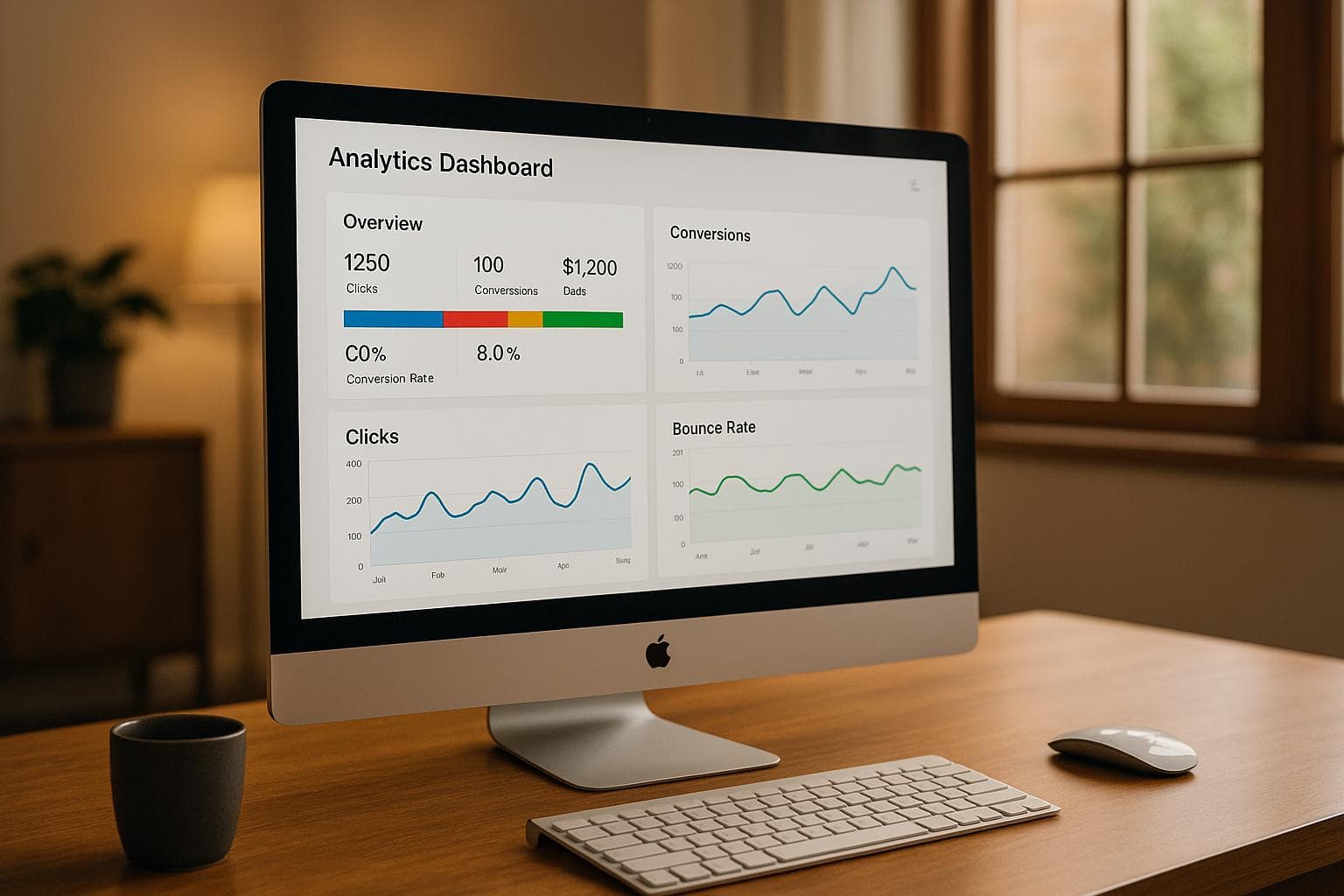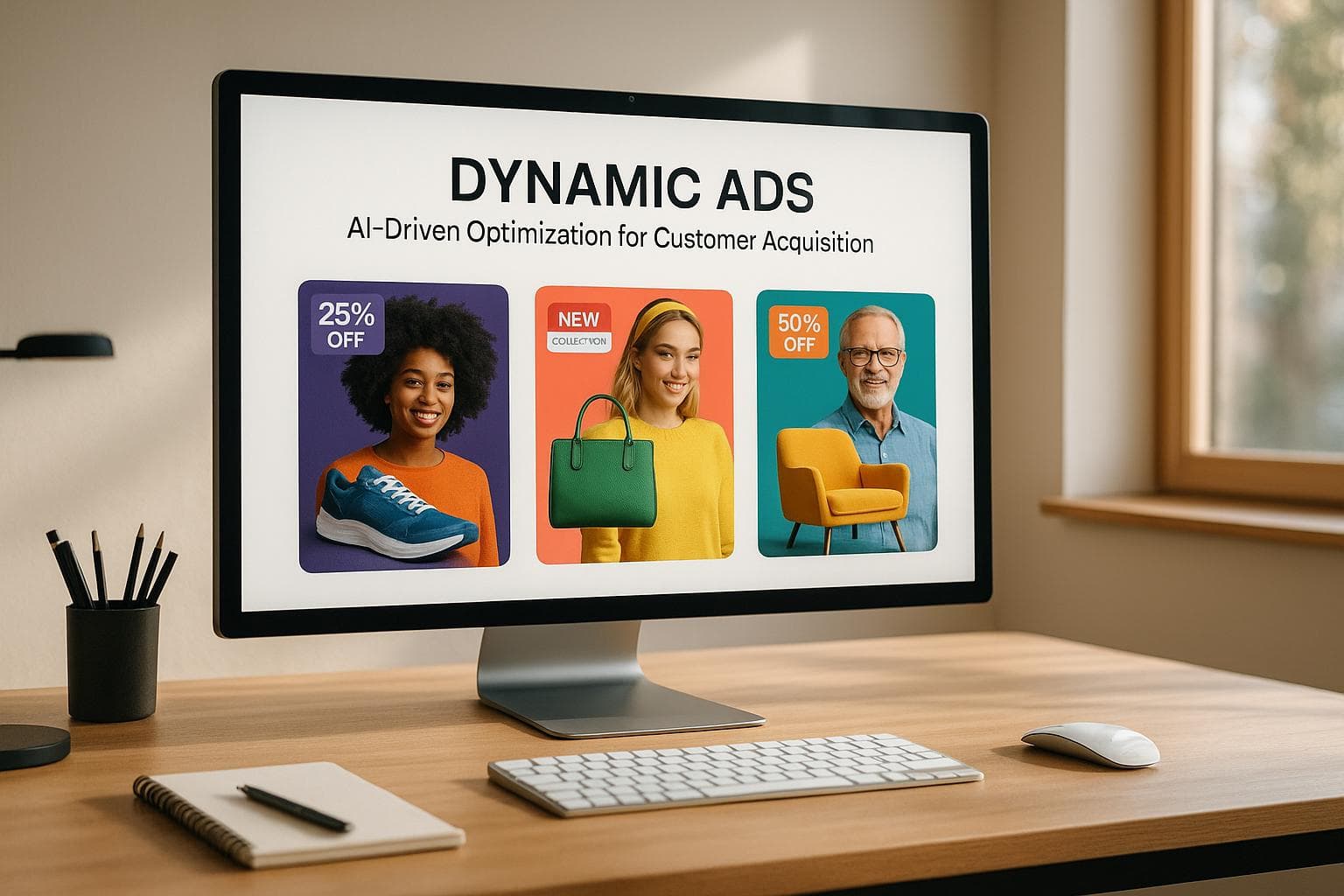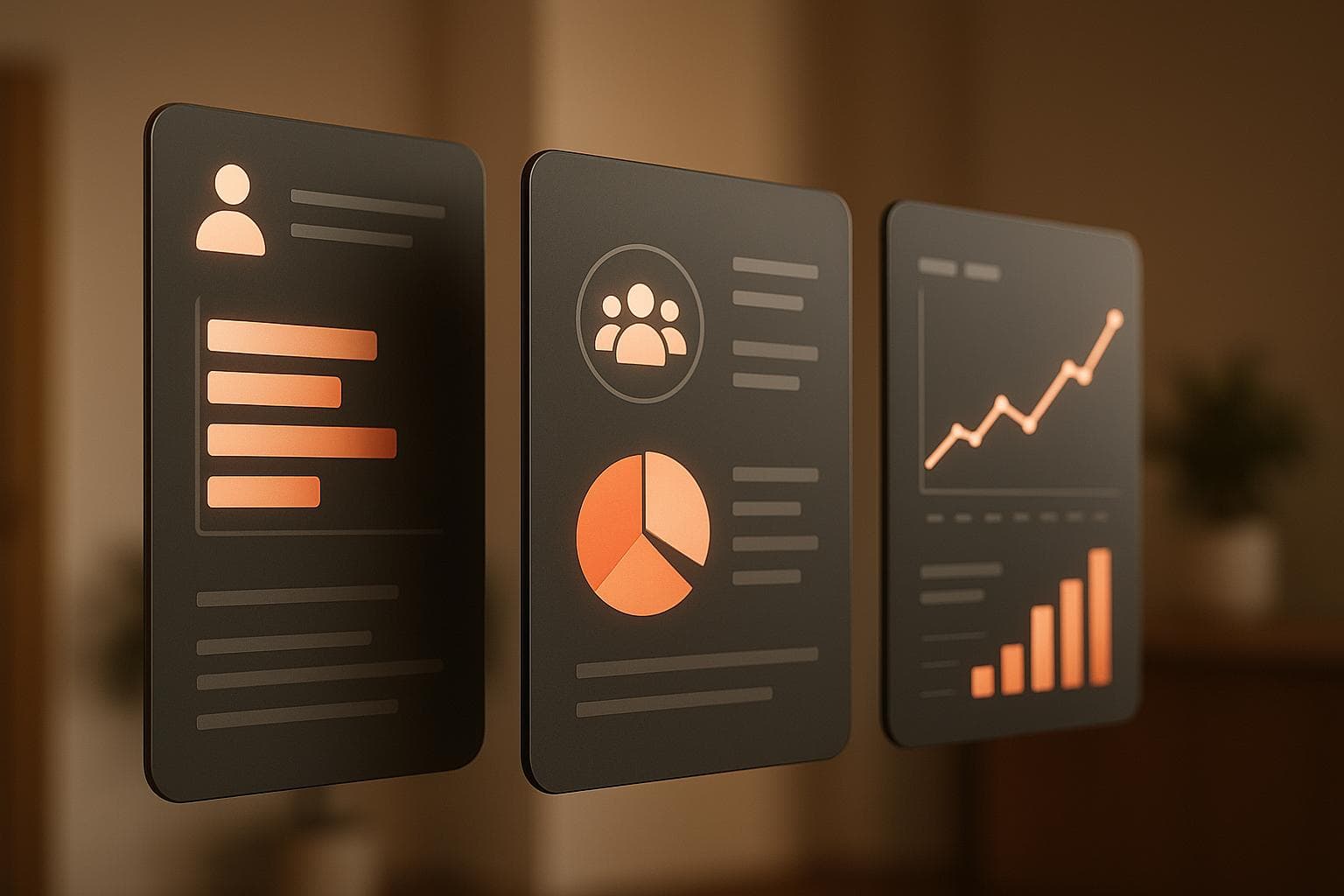Google Ads Landing Page Metrics: What to Track
Learn key metrics to optimize Google Ads landing pages, boost Quality Scores, and enhance conversion rates for better ad performance.
Your landing page can make or break your Google Ads campaigns. It directly impacts your Quality Score, which influences your ad placement and cost per click (CPC). A higher Quality Score means better ad visibility and lower costs. Optimizing key metrics like page load speed, content relevance, and mobile usability can significantly improve your campaign performance.
Here’s what you need to focus on:
- Quality Score Factors: Google evaluates your landing page for keyword alignment, transparency, navigation, and speed. A good score (7/10 or higher) lowers CPC and boosts visibility.
- Conversion Metrics: Track conversion rates, bounce rates, and time on page to measure how effectively your page turns visitors into customers.
- Ad Efficiency: Monitor cost per conversion, return on ad spend (ROAS), and traffic quality to ensure your campaigns are delivering results.
- Performance Tracking: Use tools to monitor Quality Scores, conversions, and device-specific performance over time.
Manual tracking can be time-consuming and error-prone. Tools like Feedcast.ai simplify this by automating data collection, optimizing landing pages, and providing real-time insights. With over 3,000 e-commerce brands using it, Feedcast.ai helps businesses improve their Quality Scores, reduce costs, and maximize ROI.
Key takeaway: Focus on improving landing page experience and tracking metrics consistently. Automated tools can save time and boost results for e-commerce advertisers.
How To Improve Your Landing Page Experience Google Ads Tutorial
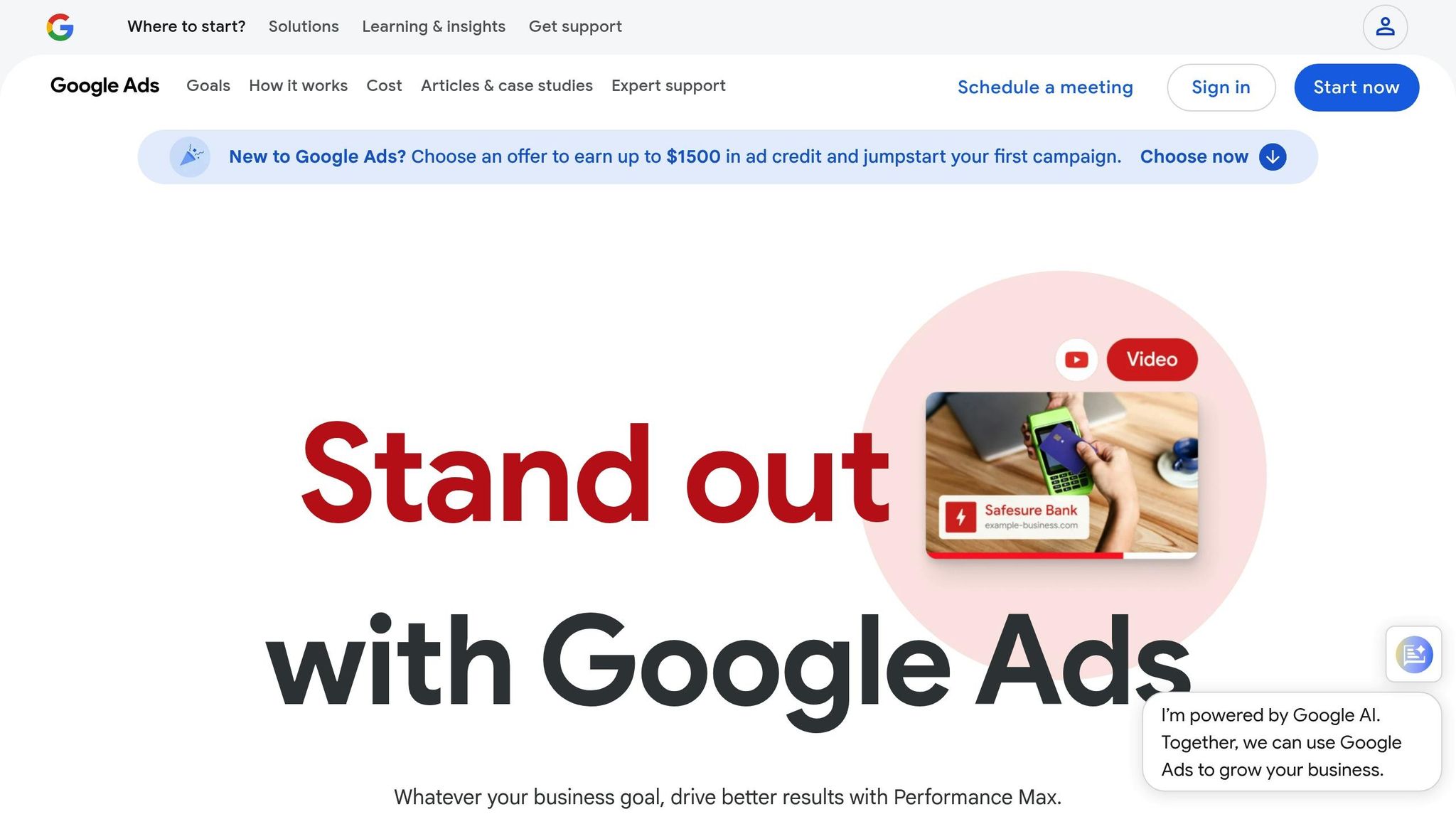
1. Google Ads Landing Page Metrics
To optimize Google Ads campaigns effectively, it's essential to understand the metrics that influence performance from the initial click to the final conversion. These metrics work together to shape your ad's success.
Impact on Quality Score
One of the key factors driving your ad's performance is landing page experience, which is a core component of your Quality Score. Alongside ad relevance and expected click-through rate, this metric evaluates how well your landing page aligns with user expectations after they click.
Google evaluates landing page experience using factors like content relevance to your keywords, page load speed, mobile responsiveness, and overall user experience. Page load speed is especially critical - slow-loading pages can drive up bounce rates and hurt your Quality Score. When these factors are optimized, achieving a Quality Score of 7 or higher becomes more attainable, which is considered strong performance by Google[4].
A higher Quality Score doesn’t just improve your ad’s position; it also lowers your cost-per-click (CPC), reducing advertising costs while enhancing user experience. This creates a positive cycle where better performance leads to more efficient spending[3].
Conversion Optimization
Metrics like conversion rate, bounce rate, and time on page reveal how effectively your landing page turns visitors into customers. These indicators show whether your page successfully guides users toward completing desired actions, such as purchases or sign-ups.
Clear calls-to-action (CTAs) are essential. Your landing page should make the next step obvious, whether it's adding a product to the cart, subscribing to a newsletter, or completing a purchase. Aligning your ad copy with landing page content is crucial to improving conversion rates.
With mobile traffic growing steadily[4], mobile optimization has become a non-negotiable. If users struggle to navigate or complete actions on their phones, your conversion metrics will likely suffer.
To fine-tune performance, A/B testing is invaluable. Experimenting with different headlines, images, button colors, or layouts can reveal what resonates most with your audience. These data-driven insights make it easier to refine your landing page for better results.
Ad Campaign Efficiency
Metrics like cost per conversion and return on ad spend (ROAS) measure whether your landing page improvements are delivering tangible business outcomes[3].
Another important metric is click-to-conversion time, which tracks how quickly users take action after reaching your page. Faster decision-making often signals clear and compelling value propositions, while longer times may indicate confusion or obstacles in the conversion process.
Traffic quality also plays a role in campaign efficiency. Visitors likely to convert often display behaviors like longer session durations, lower bounce rates, and higher pages per session. These metrics suggest your ads are attracting the right audience.
For e-commerce businesses, aligning product pages with the specific items or categories featured in ads is vital. This seamless transition from ad to landing page ensures a smoother user journey, ultimately improving campaign efficiency.
Performance Tracking
Tracking performance is critical for ongoing improvement. Quality Score monitoring is a must, as this metric directly influences ad costs and placements. Google Ads provides keyword-level Quality Score data, allowing you to pinpoint which landing pages need attention[3].
Proper conversion tracking is equally important. Beyond clicks, you should measure valuable actions like purchases, form submissions, or phone calls. Without this data, it’s impossible to gauge whether your landing page changes are driving real results.
Understanding multi-device performance is another key aspect. Desktop and mobile users often behave differently, so tracking these interactions separately helps you develop targeted optimization strategies.
Finally, it’s important to review performance trends over time. Weekly and monthly analyses provide a clearer picture of how landing page improvements are impacting your campaigns, helping you distinguish between temporary shifts and meaningful progress.
For businesses managing multiple campaigns or product categories, unified tracking tools can simplify the process. Platforms like Feedcast.ai offer centralized dashboards for monitoring key metrics across all Google Ads campaigns, making it easier to identify patterns and opportunities without juggling multiple tools.
2. Feedcast.ai for E-commerce Advertising
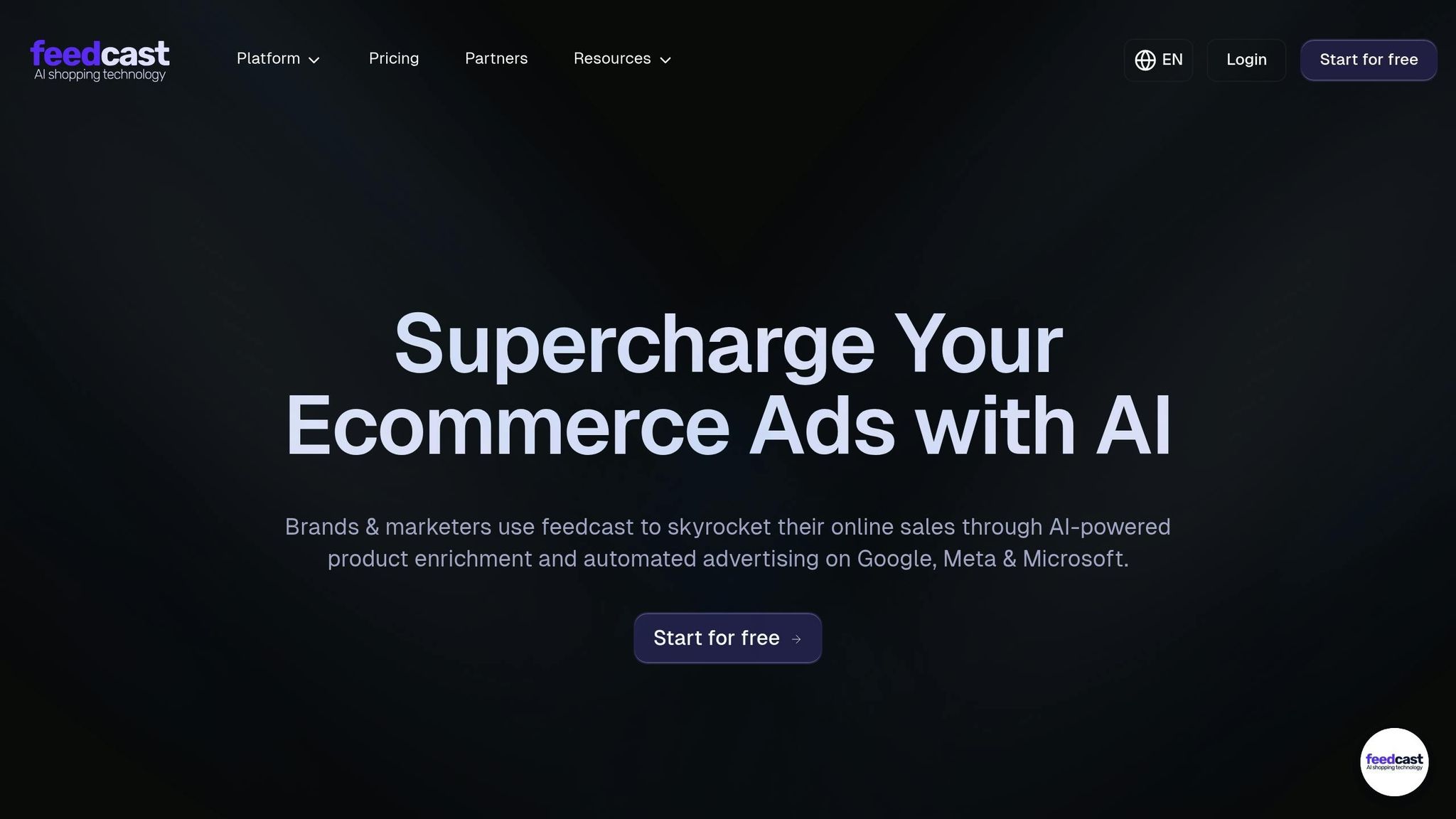
Feedcast.ai was created to address the hurdles e-commerce businesses face with Google Ads campaigns. With over 3,000 e-commerce brands already on board[1], this platform offers tools designed to improve landing page performance, ultimately driving better Quality Scores and boosting conversions. Let’s take a closer look at how it achieves these results.
Impact on Quality Score
One of Feedcast.ai's standout features is its AI-driven product feed enrichment, which directly enhances the landing page experience - a critical factor in Google’s Quality Score calculation. The platform automatically refines product titles, descriptions, and attributes to align seamlessly with your ads and keywords. This creates a smooth transition from ad click to landing page, which can lead to Quality Scores of 8 or higher. Additionally, Feedcast.ai helps prevent errors that could negatively affect performance, ensuring top-notch landing page quality. As a certified Google CSS (Comparison Shopping Service) partner, it also offers a 20% cost saving for Google Shopping campaigns[1].
Conversion Optimization
Feedcast.ai doesn’t just stop at improving Quality Scores - it also focuses on driving conversions. By leveraging AI to match product details with user intent, the platform ensures that landing pages attract highly relevant traffic. When product information is accurate, detailed, and up-to-date, visitors are more likely to find exactly what they’re looking for. This reduces bounce rates and increases the chances of actions like purchases or sign-ups. On top of that, advanced audience segmentation further enhances conversion rates by targeting the right customers with precision.
Ad Campaign Efficiency
Managing ad campaigns across multiple platforms can be overwhelming, but Feedcast.ai simplifies this process with a centralized dashboard. From Google Ads to Meta and Microsoft Ads, advertisers can oversee all campaigns in one place, reducing manual effort. Automated product feed updates ensure that landing pages always reflect accurate inventory, pricing, and product details, creating a better user experience. With improved Quality Scores and the 20% cost saving from the Google CSS partnership, businesses can lower cost-per-click rates and achieve higher returns on ad spend.
Performance Tracking
Feedcast.ai also excels at providing actionable insights. Its real-time analytics and customizable reports consolidate data from all connected advertising channels into one dashboard. This makes it easy to identify high-performing landing pages and spot areas that need improvement. With tools for performance segmentation, advertisers can analyze key metrics like click-through rates, conversion rates, and cost per acquisition in detail. This level of insight supports ongoing optimization efforts, helping maintain strong Quality Scores and consistent conversions. Plus, with pricing options that include a free starter plan, Feedcast.ai is accessible to businesses of all sizes looking to improve their Google Ads landing page performance.
sbb-itb-0bd1697
Manual Tracking vs Platform Tools: Pros and Cons
When it comes to tracking Google Ads landing page metrics, you’re faced with two main options: manual tracking or using specialized platform tools. Each has its own strengths and weaknesses, and your choice can directly impact your campaign results and how efficiently you use your resources.
Manual tracking relies on standard dashboards and exporting data manually. The benefit here is having full control over how you report and analyze data. You can customize everything to suit your needs. But let’s be honest - this method is time-intensive and leaves room for human errors.
The downsides of manual tracking are hard to ignore. If you’re managing multiple campaigns across various platforms, the process quickly becomes overwhelming. Even worse, errors in data handling can lead to poor decisions, wasting both your time and ad spend.
Platform tools like Feedcast.ai, on the other hand, take the heavy lifting out of the equation. These tools automate data collection, delivering real-time insights and consolidating metrics from multiple advertising channels into one streamlined dashboard. What might take hours to do manually can be done in minutes with these systems.
Accuracy is another area where platform tools shine. Automated systems eliminate the risk of human error, ensuring you get consistent and reliable data. Feedcast.ai even goes a step further by using AI to optimize product data and provide actionable recommendations based on performance trends. Here’s a side-by-side comparison of the two approaches:
| Factor | Manual Tracking | Platform Tools (Feedcast.ai) |
|---|---|---|
| Efficiency | Low - requires significant time for data collection, analysis, and reporting across platforms | High - automated data collection, real-time reporting, and AI-powered optimization streamline processes |
| Accuracy | Moderate - prone to human error, inconsistent data definitions, and delayed insights | High - eliminates human error, provides consistent metrics, and offers real-time performance data |
| Scalability | Low - becomes increasingly complex and resource-intensive as campaigns and channels grow | High - handles unlimited products and advertising channels with multi-account management capabilities |
The table makes it clear: platform tools offer a level of efficiency and scalability that manual tracking simply can’t match. Cost considerations also play a role. While manual tracking may seem free at first glance, the time it consumes could be better spent refining your strategy or optimizing campaigns. Platforms like Feedcast.ai start with a free plan, and their paid options begin at $99 per month. The potential return on investment (ROI) from improved efficiency and performance often makes the cost worthwhile.
For businesses aiming to grow, scalability becomes the game-changer. Managing a handful of campaigns manually might work for smaller operations, but as you expand to platforms like Google Ads, Meta, and Microsoft Ads, keeping track manually becomes nearly impossible. Feedcast.ai’s unified dashboard lets you scale your efforts without adding to your workload. This is especially critical for e-commerce advertisers juggling multiple campaigns and channels.
While manual tracking might suffice for small-scale campaigns with simple needs, e-commerce businesses serious about growth will find that automated platforms deliver the efficiency, accuracy, and scalability required to stay competitive in today’s fast-paced advertising world.
Conclusion
Landing page metrics play a crucial role in the success of Google Ads campaigns. They directly influence key factors like Quality Score, cost per click, and ad placement [2][4][3]. Google places significant emphasis on landing page experience as a core component of Quality Score [2][4][3]. A well-optimized landing page can achieve a Quality Score of 7 or higher, paving the way for better ad performance [4][3]. This creates a solid foundation for improving campaign outcomes.
Managing multiple campaigns manually, however, can be a daunting and error-prone task. The time spent gathering data, fixing mistakes, and generating reports could be better allocated to refining strategies. This is where Feedcast.ai steps in to simplify the process.
Feedcast.ai offers a game-changing solution for e-commerce businesses by providing a centralized dashboard that tracks performance across Google Ads, Meta, and Microsoft Ads in real time. Its AI-powered product feed enrichment ensures that landing pages are tightly aligned with ad copy and keywords - an essential factor for earning high landing page experience scores. With more than 3,000 e-commerce brands already leveraging the platform to generate millions of clicks and sales [1], the results speak for themselves.
But Feedcast.ai doesn't stop at tracking. Its automation features handle product data management, ad creation, and performance monitoring, freeing up time for you to focus on strategic decision-making. As a certified Google CSS partner, it also helps reduce costs on Google Shopping campaigns [1], allowing you to reinvest those savings into further advertising efforts. By automating these processes, Feedcast.ai not only simplifies operations but also boosts revenue potential.
Investing in tools that streamline tracking and optimization is a smart move. Businesses that actively monitor their metrics and act on data-driven insights are better positioned to grow sustainably while keeping ad costs under control.
FAQs
How does a better Quality Score for my landing page impact the cost and visibility of my Google Ads campaigns?
Improving your landing page's Quality Score is a smart way to cut advertising costs while increasing the reach of your Google Ads campaigns. When your Quality Score goes up, Google sees your ads as more relevant and user-friendly. The reward? Lower cost-per-click (CPC) rates and better ad placements.
To boost your Quality Score, focus on three main areas: landing page experience, ad relevance, and expected click-through rate (CTR). By refining these elements, you'll not only connect with a larger audience but also get more value out of your ad spend, making your campaigns more efficient and effective.
How can I improve my landing page to boost conversions for Google Ads campaigns?
To make your landing page more effective and boost conversions for your Google Ads campaigns, focus on a few key areas. First, ensure your page loads fast, works well on mobile devices, and provides a smooth, user-friendly experience. Pair this with clear, attention-grabbing headlines and strong calls-to-action (CTAs) that match the message in your ads.
Another way to improve results is by fine-tuning your product data. Tools like Feedcast.ai can help optimize product titles, descriptions, and other details, making your ads more visible and effective. Don't forget to keep an eye on important metrics like Quality Score and Page Experience. These can highlight areas that need work, helping you adjust your strategy for better results.
How can Feedcast.ai help e-commerce businesses track and enhance landing page performance?
Feedcast.ai streamlines the process of tracking and improving landing page performance by serving as a centralized hub for managing ad campaigns across platforms like Google, Meta, and Microsoft Ads. One standout feature is its AI-driven product data enrichment, which enhances product visibility. This can lead to better ad performance and a smoother user experience on landing pages.
Additionally, the platform offers real-time performance analytics through a single, easy-to-navigate dashboard. This allows businesses to keep an eye on key metrics and make informed, data-backed decisions. By simplifying campaign management and optimization, Feedcast.ai enables e-commerce businesses to save time while driving better outcomes.
Yohann B.
